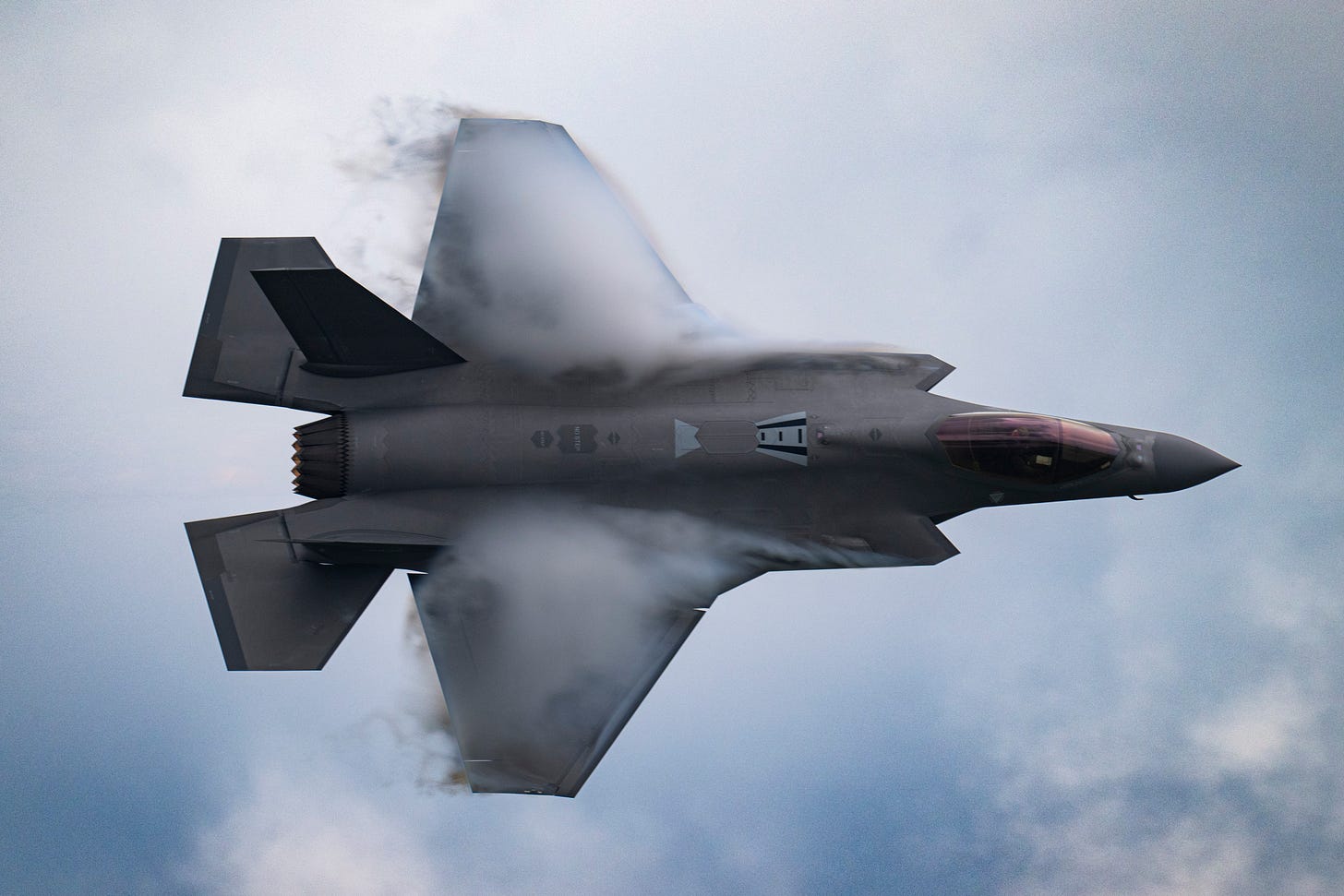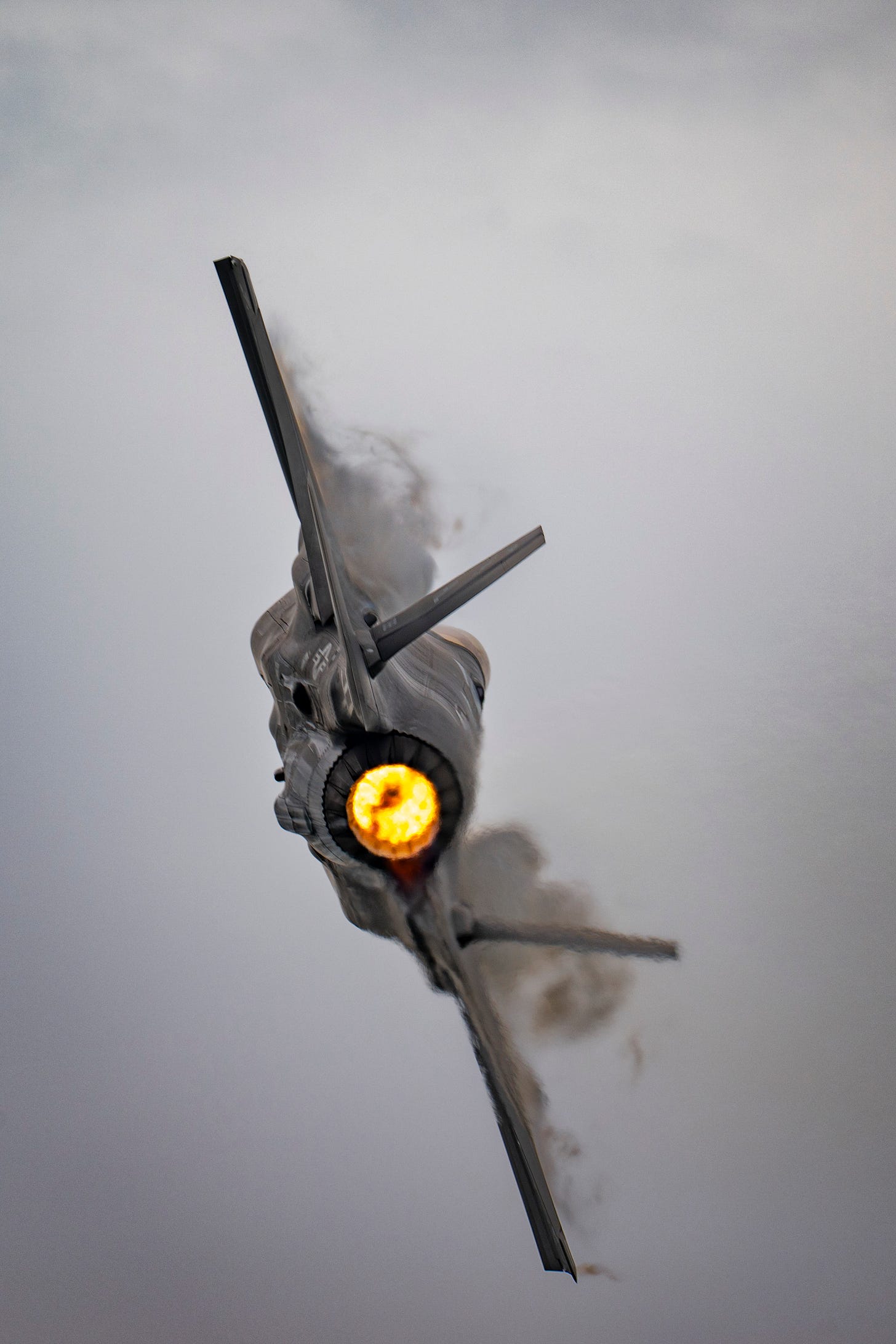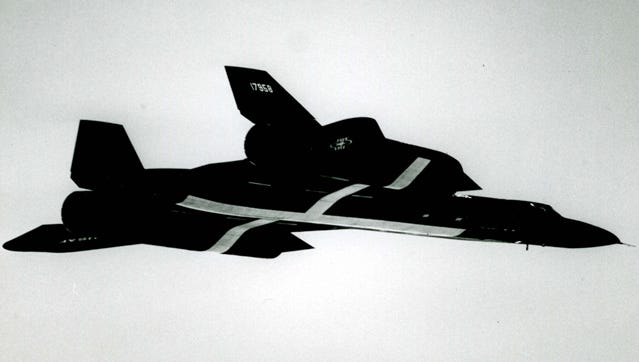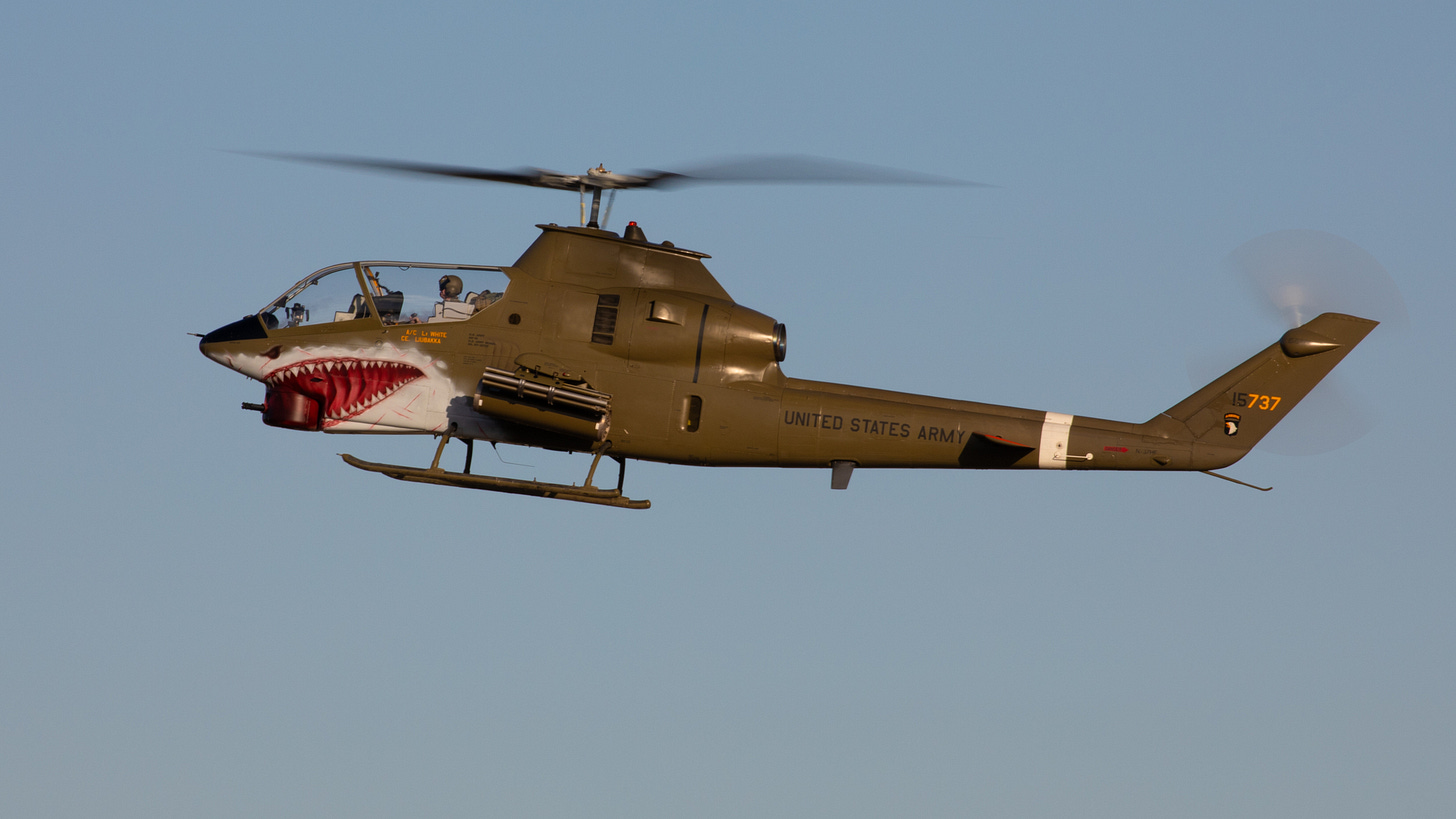From Blackbird to Bottlenecks: A Tale of Two Jet Ages
As the SR-71 set records that still stand nearly 50 years later, the F-35 faces modern delays grounded in software struggles—highlighting how far we've come, and how far we still have to go.
“freedom to take risks—and fail—define the heart of a Skunk Works operation.”
-Ben R. Rich from Skunk Works: A Personal Memoir of My Years at Lockheed
Mission Briefing
Those F-35 Block 4 upgrades promise many revolutionary changes - but the number and length of delays is reaching epic proportions at this point. In fact, frustrations over those long-delayed upgrades have forced the U.S. Air Force to hit the brakes on procurement. As you know, Block 4 modernizations are a series of sweeping upgrade that promises next-gen software, sensors, weapons, and processors needed to confront peer adversaries like China.
But those upgrades aren’t ready.
The Air Force requested just 24 F-35s in its 2026 budget—down from 44 the previous year and barely half the intended buy. According to Air Force Chief of Staff Gen. David Allvin, the service won’t ramp up orders again until it can buy “F-35s that are most relevant for the fight.”
That means Block 4. Fully operational. No retrofits.
Lockheed’s struggles to integrate the backbone of the upgrade—known as Technology Refresh 3 (TR-3)—caused a full stop in deliveries for over a year. Though TR-3 jets have started flowing again in a limited configuration, the final combat-ready version hasn’t been approved by the F-35 Joint Program Office. Meanwhile, Congress remains frustrated. Lawmakers declined to increase the 2026 buy in the House defense bill, citing performance shortfalls and unclear timelines.
The delays arrive at a time when the Pentagon is shifting funding toward newer initiatives, including the sixth-generation F-47 fighter. Defense Secretary Pete Hegseth’s reallocation of 8% of the DOD budget toward Trump-era priorities has cut deep across multiple programs. Aircraft procurement as a whole is down, and the Air Force now says its long-standing benchmark of 72 new fighters per year is out of reach.
Instead, the service is leaning into a broader modernization push. Alongside its F-35 pause, the Air Force is requesting to retire 340 aircraft—most notably accelerating the A-10 Warthog’s sunset. While some in Congress seek to protect a portion of the A-10 fleet, Allvin made clear: if lawmakers want to keep those jets flying, they’ll need to pony up the funds.
Still, Allvin insists this isn’t just about cutting tails. It’s about investing in platforms that deliver relevant effects in future conflicts. “It’s the outcome that counts,” he said. “What are the capabilities we can provide, and are those investments paying off?”
Stealth Still Matters
If there was ever a demonstration of what modern airpower can achieve, it came during last month’s Operation Midnight Hammer. In a bold show of force, seven B-2 Spirit bombers launched a long-range strike on three Iranian nuclear facilities, supported by a coalition of more than 125 aircraft—including fifth-generation fighters and aerial tankers.
No boots on the ground. No lingering entanglements. Just precision, reach, and control of the skies.
“That to me demonstrates very viscerally the importance of airpower and air dominance,” Allvin said.
He also rejected the notion that stealth has become outdated. “Stealth is the price of admission in a future fight,” he emphasized, citing the upcoming B-21 Raider as the next evolution in penetrating strike capabilities.
The lesson from Midnight Hammer was clear: control of the air can defuse crises before they escalate—and when the mission matters, American airmen rise to meet it.
Whether it's navigating budget turbulence or executing complex, high-stakes operations, the U.S. Air Force continues to adapt—and advocate for the tools it believes will define the next generation of combat.
This Week in Aviation History
In the high desert skies above Beale Air Force Base, California, the fastest aircraft ever built made history—twice in one day.
On 28 July 1976, the Lockheed SR-71A Blackbird, tail number 61-7958, flew higher and faster than any air-breathing manned aircraft before—or since.
Piloted by Captain Robert C. Helt and Major Larry A. Elliott, the Blackbird reached an altitude of 85,068 feet (25,929 meters), setting the Fédération Aéronautique Internationale (FAI) world record for altitude in horizontal flight. That’s over 16 miles above the Earth’s surface—higher than the cruising altitude of the U-2 spy plane and just below the edge of space.
But the Blackbird wasn’t done yet.
That same day, a second crew—Captain Eldon W. Joersz and Major George T. Fuller, Jr.—pushed 61-7958 even further. Flying at an average speed of 2,193.17 miles per hour (3,529.56 km/h) over a 15/25 km course, they set the World Absolute Speed Record for a manned jet aircraft—a record that still stands today.
And if that wasn’t impressive enough, the day before, Major Adolphus H. Bledsoe, Jr. and Major John T. Fuller had set a now-broken world speed record over a 1,000 km closed circuit in the very same aircraft.
For their feats, all six airmen were awarded the Henry De La Vaulx Medal, the FAI’s highest honor for absolute aviation records.
Today, SR-71 61-7958 rests quietly on display at the Museum of Aviation in Warner Robins, Georgia, a static tribute to the jet that once outran missiles and touched the edge of space.
✪ SR-71 Blackbird: A Sidebar Look
Top Speed: Mach 3.3+ (2,200+ mph)
Ceiling: 85,000 ft
Engines: 2 × Pratt & Whitney J58 turbojets
Fuel Temp on Takeoff: So cold it had to be pre-chilled to prevent leaks
Skin Temp at Cruise: 600+ °F—hot enough to expand the airframe by several inches
Nickname: “Habu,” after a venomous Okinawan snake
Designed by: Clarence “Kelly” Johnson and the Lockheed Skunk Works
Total Built: 32 airframes
The SR-71 wasn’t just fast—it was the benchmark. Flying above and beyond the reach of enemy defenses, it delivered critical intelligence at a time when satellite surveillance was still in its infancy. Its records are still unbroken, nearly 50 years later—a testament to one of the greatest engineering achievements in aviation history.
In Case You Missed It
More on the F-35 from Down Under:
Photo Outlet
Every issue of Hangar Flying with Tog gets you a free image that I’ve taken at airshows:
Feel free to use these photos however you like, if you choose to tag me, I am @pilotphotog on all social platforms. Thanks!
Post Flight Debrief
Like what you’re reading? Stay in the loop by signing up below—it’s quick, easy, and always free.
This newsletter will always be free for everyone, but if you want to go further, support the mission, and unlock bonus content, consider becoming a paid subscriber.
Your support keeps this flight crew flying—and I couldn’t do it without you.
– Tog






